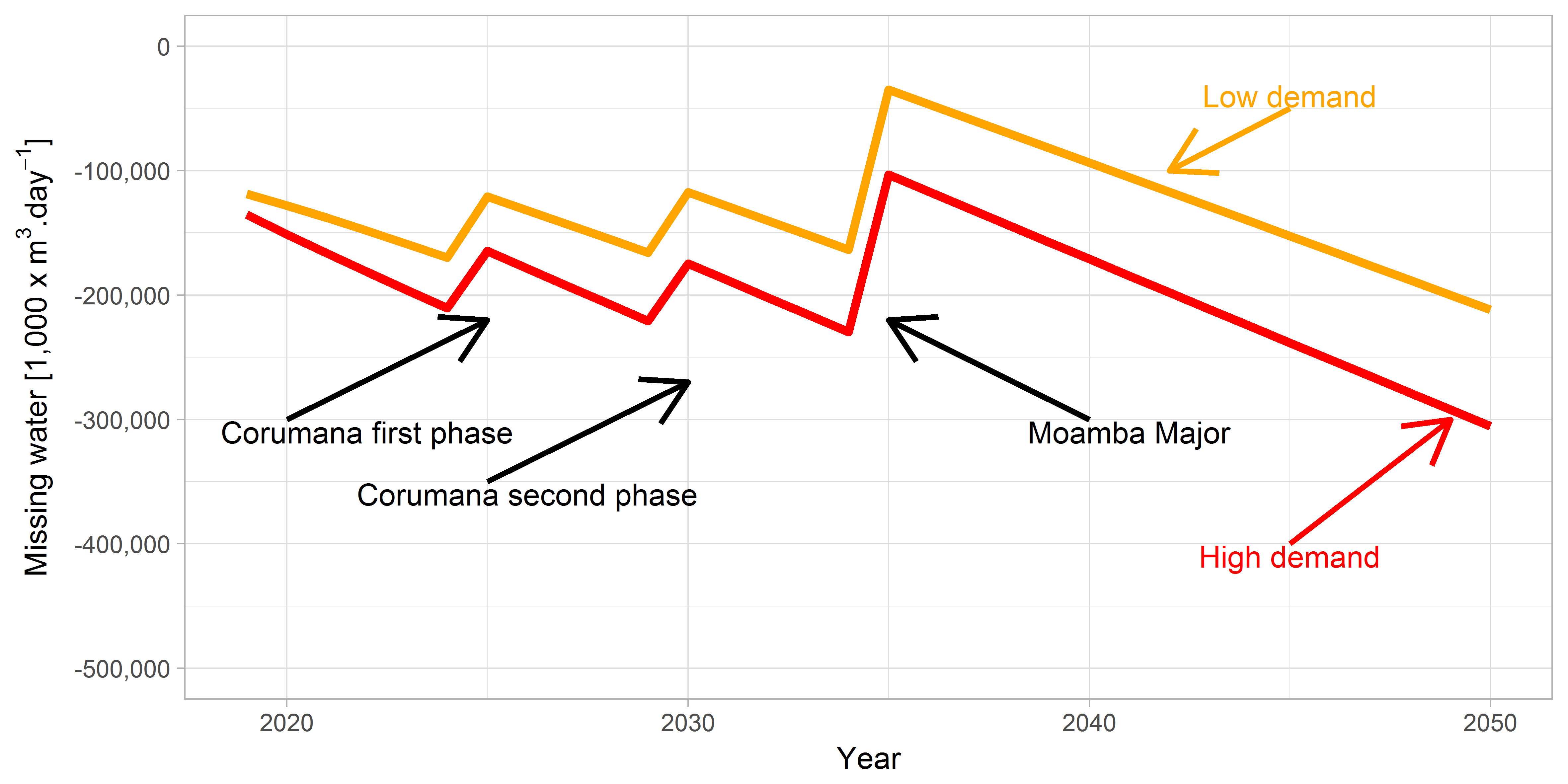by André
You might have understood by now that I really enjoy playing with data, particularly use publicly available data to characterize decision making processes in the water and sanitation sector in Mozambique. That’s exactly what I did for my previous article. This time around I am looking at water demand for the city of Maputo until 2050 and compare that to the existing and projected availability.
In our vision water reclamation is the linking pin between water and sanitation services: drinking water is produced, pumped to consumers, wastewater is then conveyed to the treatment plant, treated and supplied to industrial or domestic clients, depending on the situation. However, the main question remains: how do you motivate the relevance of water reclamation. I believe that this requires a number of steps. The first is to recognize that sanitation services are lagging behind and that the lack of adequate services is a serious issue to human health and the environment. That’s exactly what I aimed to do with my previous article, tracking nitrogen flows in the city of Maputo and making the link between onsite sanitation and groundwater contamination by Nitrate. The next step is showing that wastewater is not really waste but a product with value that can be adequately treated and sold, this potential revenue can be used to finance better and more inclusive sanitation services and infrastructure. This is what Celma and Noor are doing. Then, there’s a third step: showing that water scarcity is a reality and it will get worst in the next decades and this last point is exactly what my aim is this time around.
To that scarcity is a serious issue, I looked at publicly available data to make the plot below, depicting the daily volume of missing water for Greater Maputo. In detail, I forecasted the water demand for the whole city using historical World Bank data and subtracted these data from the existing surface water source (200,000 m3/day from Pequenos LIbombos) and planned infrastructural developments planned, in particular:
- First phase of Corumana: 60,000 m3/day by 2025
- Second phase of Corumana: 60,000 m3/day by 2030
- Moamba Major: 140,000 m3/day by 2030
To the total water available I added 50,000 m3/day which is, according to SWECO, the sustainable groundwater abstraction for Maputo’s aquifer. I then came up with two trend lines, one for high demand scenario (red dots in Figure below) and low demand scenario (orange dots in Figure below). One thing is obvious: the values in the Y-axis are always negative as there’s not enough water to cover the demand. In fact, according to these projections, Maputo will need extra 250,000 m3/day by 2050, to give you a sense of perspective, this is 50,000 m3/day more than what is currently available from the treatment plant in Boane. However, I see these infrastructural developments as a way of maintaining the status quo – around 100,000 m3/day missing – rather than attempts to significantly improve the current situation.

Volume of missing water (water available – total demand) for Greater Maputo according to World Bank projections. The values are consistently negative which means that the existing water sources are insufficient to cover total demand even when accounting for planned developments, such as Corumana (120,000 m3/day in two phases) and Moamba Major (140,000 m3/day).
Producing this plot was just the beginning: I will now make my own projections and calibrate these based on discussions with water and sanitation experts. I will then compare my projections with the ones above. Then, I am planning to organize a workshop in Maputo where these results will be used as starting-point and the main question will be: what has to be done in the coming 10 years to increase water availability for the city of Maputo? The national water and sanitation sector should start planning and discussing developments that go beyond dam building and expansion, in particular leakage reduction, water demand management and water reclamation. This can, obviously, be done in parallel with the identification of new sources (e.g. desalination) but I argue that this should be seen as the last resort.





















Pingback: EXPOPLAMA 2018 – Fostering innovation and entrepreneurship in the water sector | Sustainable freshwater supply for urbanizing Maputo, Mozambique